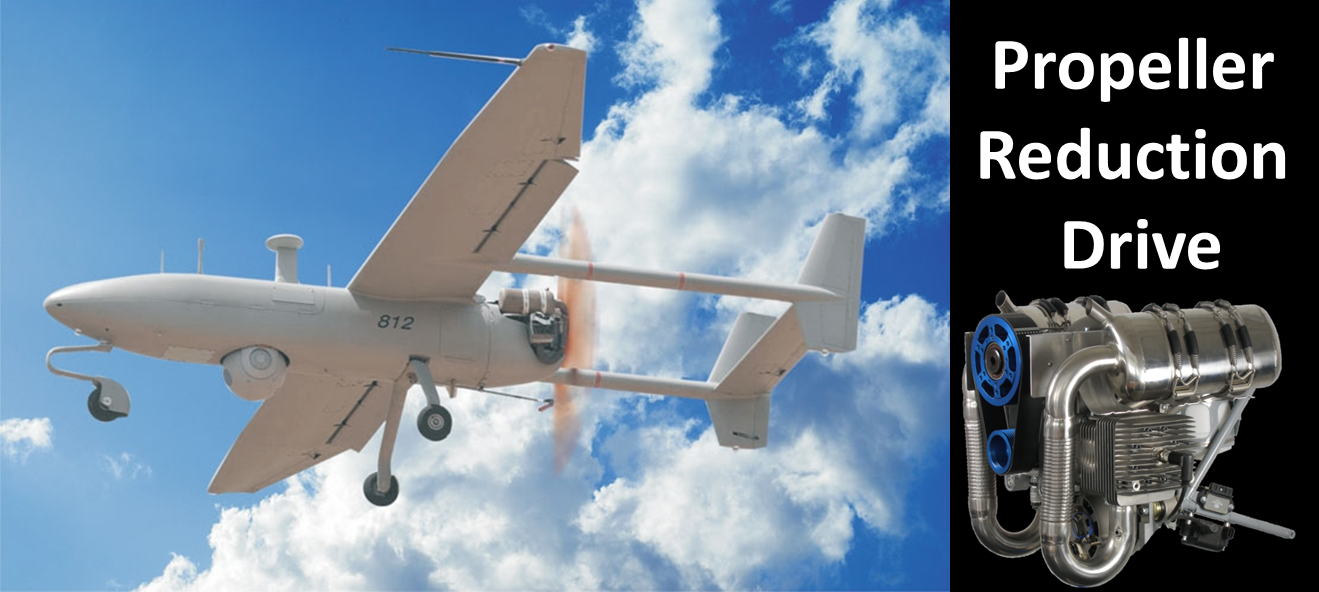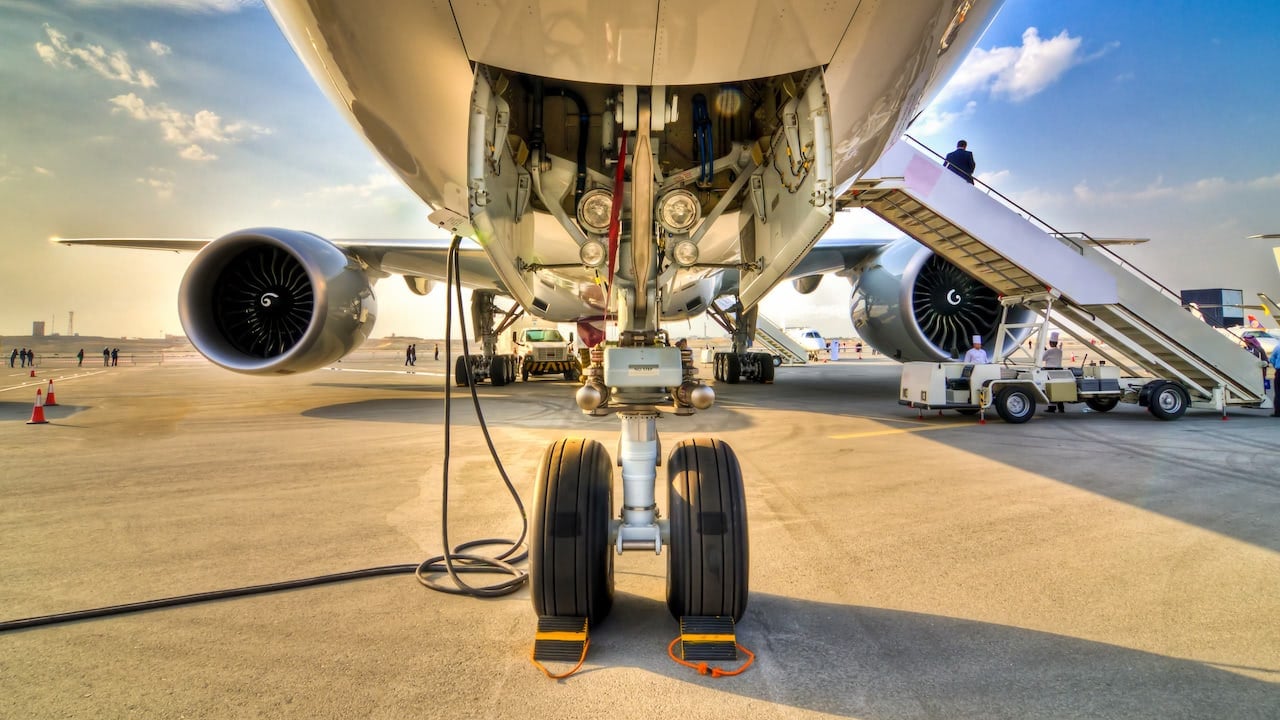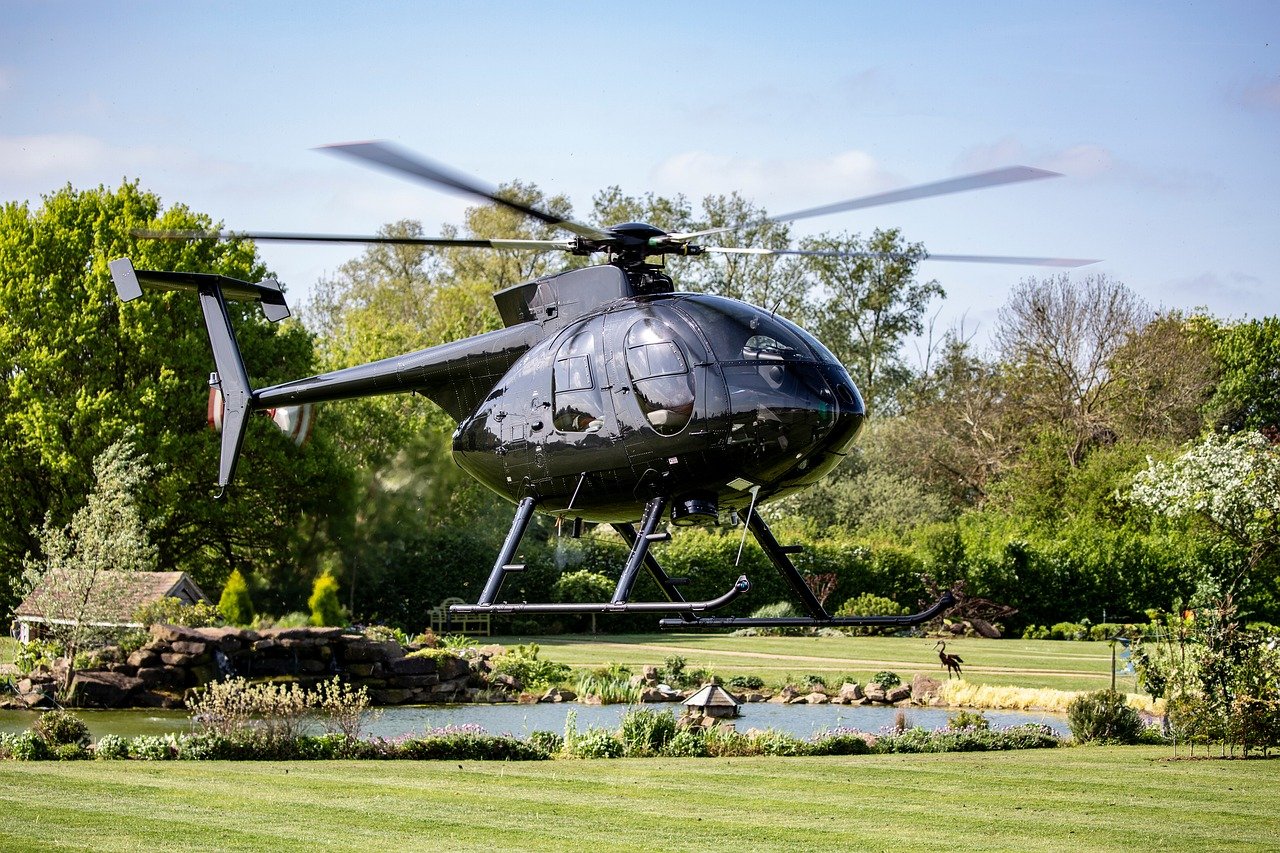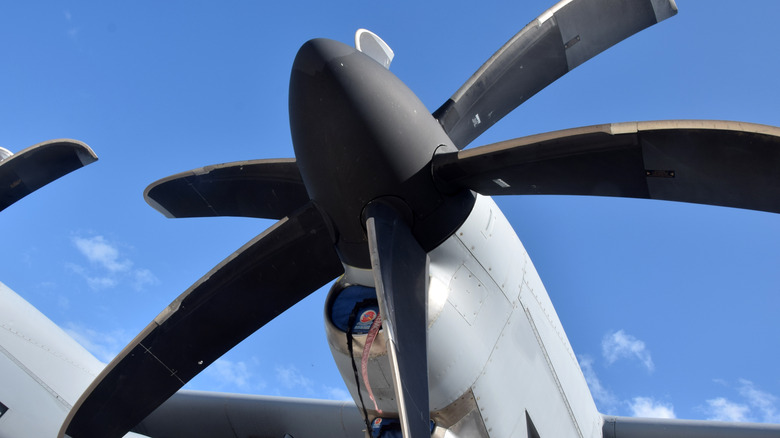Propeller Reduction Gear
The propeller reduction gear is a critical component in aircraft equipped with piston engines or turboprop engines. Its main function is to reduce the high rotational speed of the engine to a lower speed suitable for driving the propeller efficiently. This reduction in speed allows the propeller to convert the engine's power into thrust more effectively, improving fuel efficiency and reducing noise.
The propeller reduction gear consists of several gears, including a drive gear connected to the engine's crankshaft and a driven gear attached to the propeller shaft. These gears are typically helical or spur gears and are designed to mesh smoothly to transmit power effectively.
In piston-powered aircraft, the reduction gear ratio is typically around 0.5 to 0.6, meaning that the propeller rotates at about half or slightly more than half the speed of the engine. This reduction in speed allows the propeller to operate at its optimal efficiency, generating thrust with minimal noise and vibration.
In turboprop aircraft, the reduction gear is used to match the high-speed output of the gas turbine engine to the lower rotational speed required by the propeller. This reduction gear allows turboprop engines to operate efficiently across a wider range of speeds, making them suitable for a variety of aircraft types and missions.
Overall, the propeller reduction gear is a critical component in aircraft propulsion systems, allowing engines to operate more efficiently and quietly while providing the thrust needed for flight.
Landing Gear
The landing gear is a crucial component of an aircraft that allows it to take off, land, and taxi on the ground. It consists of wheels, struts, and other mechanisms that support the weight of the aircraft and provide stability during ground operations. The landing gear is typically retractable, meaning it can be raised into the aircraft's fuselage during flight to reduce drag.
The landing gear system includes several key components, each serving a specific function:
Main Landing Gear: The main landing gear is located under the wings and supports the majority of the aircraft's weight. It consists of one or more wheels attached to struts that extend downward from the wings or fuselage.
Nose Landing Gear: The nose landing gear is located under the aircraft's nose and supports the front of the aircraft when it is on the ground. It typically consists of a single wheel attached to a strut that extends downward from the aircraft's fuselage.
Shock Absorbers: Landing gear systems often include shock absorbers to dampen the impact of landing and taxiing on rough surfaces. These absorbers help protect the aircraft's structure and components from damage.
Retraction Mechanism: The landing gear retraction mechanism allows the landing gear to be raised into the aircraft's fuselage during flight. This mechanism may include hydraulic or electric actuators that raise and lower the landing gear.
Braking System: The landing gear is equipped with brakes that allow the pilot to slow down and stop the aircraft during landing and taxiing. The braking system may include hydraulic or pneumatic components that apply pressure to the wheels to slow them down.
Steering Mechanism: Some aircraft have a steering mechanism on the nose landing gear that allows the pilot to steer the aircraft while on the ground. This mechanism is typically connected to the aircraft's rudder pedals
Overall, the landing gear is a critical component of an aircraft's design, allowing it to operate safely and efficiently on the ground. The design and construction of landing gear systems are subject to strict regulations and standards to ensure the safety of flight operations.
Helicopter Transmission Gears
Helicopter transmission gears are essential components of a helicopter's transmission system, responsible for transmitting power from the engine to the main rotor and tail rotor. These gears play a crucial role in controlling the helicopter's flight characteristics, such as lift, thrust, and stability. Here are some key aspects of helicopter transmission gears:
Main Rotor Transmission: The main rotor transmission gears transfer power from the engine to the main rotor shaft, which drives the main rotor blades. These gears are designed to withstand high loads and speeds and must be precisely engineered to ensure smooth and efficient power transfer.
Tail Rotor Transmission: The tail rotor transmission gears transfer power from the engine to the tail rotor shaft, which controls the helicopter's yaw or side-to-side movement. These gears are usually smaller and lighter than main rotor transmission gears but must still be robust and reliable.
Gear Reduction: Helicopter transmission gears often include gear reduction systems to match the high-speed output of the engine to the lower speed required by the main and tail rotors. This reduction in speed allows the rotors to operate more efficiently and reduces the risk of mechanical failure.
High-Strength Materials: Helicopter transmission gears are typically made from high-strength materials, such as hardened steel or titanium, to withstand the high loads and stresses encountered during operation.
Lubrication System: Helicopter transmission gears require a sophisticated lubrication system to ensure smooth operation and minimize wear. The lubricant must be able to withstand high temperatures and pressures and provide adequate protection against friction and corrosion.
Maintenance and Inspection: Helicopter transmission gears require regular maintenance and inspection to ensure they are functioning correctly. Any signs of wear or damage must be addressed promptly to prevent potential mechanical failures.
Overall, helicopter transmission gears are critical components that contribute to the safe and efficient operation of helicopters. They must be designed, manufactured, and maintained to the highest standards to ensure the safety of flight operations.
Turboprop Reduction Gear
The turboprop reduction gear is a critical component in turboprop engines, which are commonly used in aircraft to provide propulsion. The reduction gear is responsible for reducing the high-speed output of the engine's turbine to a lower speed suitable for driving the propeller efficiently. Here are some key aspects of turboprop reduction gears:
Reduction Ratio: The reduction gear reduces the high-speed rotation of the engine's turbine, which can exceed tens of thousands of revolutions per minute (RPM), to a lower speed suitable for the propeller. The reduction ratio is typically between 10:1 and 20:1, meaning that the propeller rotates at a tenth to a twentieth of the turbine speed.
Planetary Gear System: Turboprop reduction gears often use a planetary gear system, which consists of a central sun gear, planet gears, and a ring gear. This system allows for compact and efficient gear reduction while distributing the load evenly among the gears.
High-Speed Input Shaft: The reduction gear is connected to the high-speed output shaft of the engine's turbine. This shaft rotates at high speeds and must be designed to withstand the stresses and temperatures generated by the turbine.
Low-Speed Output Shaft: The output shaft of the reduction gear is connected to the propeller and rotates at a lower speed than the input shaft. This shaft transmits the reduced speed and torque to the propeller, allowing it to generate thrust.
Bearings and Lubrication: Turboprop reduction gears require high-quality bearings and lubrication systems to ensure smooth and reliable operation. The bearings must be able to withstand high speeds and loads, while the lubrication system must provide adequate lubrication to reduce friction and wear.
Efficiency and Performance: The design of the reduction gear is critical for the overall efficiency and performance of the turboprop engine. A well-designed reduction gear can improve fuel efficiency, reduce noise and vibration, and increase the lifespan of the engine and propeller.
Overall, the turboprop reduction gear is a vital component of turboprop engines, allowing them to operate efficiently and reliably while providing the necessary power for aircraft propulsion.












